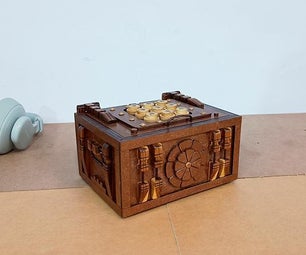Introduction: Easy-Peasy PVC Water Gun
There are a handful of do-it-yourself PVC water guns on the internet.
This water gun is similar to other versions out there, including this one I shared a few years ago, but with a handful of new tricks to simplify the design and make it easier for people to duplicate.
If you make a few, let me know how it goes in the comments.
Thanks for taking a look!
Step 1: How It Works
This type of water gun is basically a large syringe. There are two main parts: the outer piece which is the barrel, and the inner piece which is the plunger, or piston.
On one end of the piston there is generally some type of seal, that acts as a round, watertight squeegie. This seal allows the piston to draw water into the barrel as you withdraw the piston from the barrel, and to force water out as you push it in.
The hardest part with this style of homemade water gun is the seal. If it's either too tight or too loose, the gun won't work. There are a lot of complicated ways to make an effective seal, but I believe I found a simpler way to get the same results, quickly and easily. I'll explain as we go.
Step 2: Materials
First off, I recommend making six water guns at once. This maximizes the use of materials and should only cost around $30 total. Plus, six water guns seems to be the right number needed to start a decent neighborhood water fight.
Here's what is used to make one water gun:
- 20" of each: 1" and 1 1/4" PVC pipe (usually available in 10-foot sections, hence the suggestion to make six water guns at once)
- End cap for each diameter of pipe
- One 3/4" plug (generally for use on 3/4" pipe)
- Two o-rings with inside diameter 28mm, outside diameter 34mm, width 3mm. I found these in the hardware bins at an Ace hardware. If you can't find this size, you may be able to use whatever close size of o-ring you can find, using the adjusting method I will cover ahead.
Aside from the o-rings, I bought all my supplies at a Home Depot store.
The only problem I foresee with this water gun design is that the style of the crucial PVC piece--the 3/4" plug--varies depending on the store and who their current supplier of PVC fittings is. That may be a speed bump for some, as well as being able to find the correct o-ring size.
Now, the real secret to this design is dental floss. Yes, the humble, single-use tooth thread that sits undisturbed in your medicine cabinet. You might as well just move it to the workshop where it will see a little more use. It's actually quite handy stuff.
Step 3: Cut Pipe
Begin by cutting 20" sections of pipe. The simplest way to do this is to use a power miter saw. But there are plenty of other ways if needed.
To speed up the process, slip the 1" pipe into the 1 1/4" pipe before cutting.
Step 4: Assemble Barrel
Drill a 3/16" hole into the center of the 1 1/4" cap, and use PVC cement to glue this to an end of the 1 1/4" pipe. Follow the directions on the cement bottle.
Tip: I sanded off the raised logo on the cap to give me a flat surface to start the drill bit when drilling the hole, and used a drill press to make sure the hole was as straight as possible.
Step 5: Assemble Piston
The 3/4" plug is not normally used with 1" pipe, so it won't fit as is.
To make it fit, I used a sanding drum on my rotary tool to sand down an inch or so of the inside of the 1" pipe, until the plug could be inserted and withdrawn without too much trouble.
Place two o-rings onto the plug and mark their height with a pencil.
Glue the plug into one end of the 1" pipe with cement, just up to the line. You do not want the o-rings to be pinched tightly between the flared end of the plug and the pipe, so a little wiggle room is desirable (1/32" extra or so is fine).
Glue the 1" cap onto the other end of the 1" pipe, which becomes the handle. Other fittings could be use if desired, such as a T or elbow.
Step 6: Adjustable Pressure O-rings
And now for the main trick!
Wrap about 30 feet of dental floss tightly and evenly into the gap between the end of the plug and the end of the pipe on the piston. Leave a loose "tail" of a few inches.
Place the o-rings over the dental floss, and check the fit of your nearly completed seal into the open end of the barrel. It should just barely fit with a little pressure. If it is too tight, simply pull a few inches of the dental floss at a time out from beneath the o-rings, and test until you get the right fit in the barrel. You don't even need to remove the o-rings unless you need to add more floss. When the seal is working properly, trim off the loose floss and you're done.
There is a little bit of trial and error required here, but after the 2nd or 3rd water gun for me I had a pretty good feel for what amount of pressure the seal needed to have to function properly.
I recommend doing this step outside next to a full bucket of water, in conjunction with the next step.
Step 7: A Little Bit of Lubricant
Spread a little bit of petroleum jelly onto the o-rings, as well as to the inside edge of the barrel end.
You only need a little; too much will actually be less effective.
Step 8: Have a Water Fight!
After a little testing and adjusting the o-ring seals, you should have a pile of awesome homemade water guns for you next big water fight!
Let me know if you make some. Thanks again for looking!

Participated in the
Great Outdoors Contest











